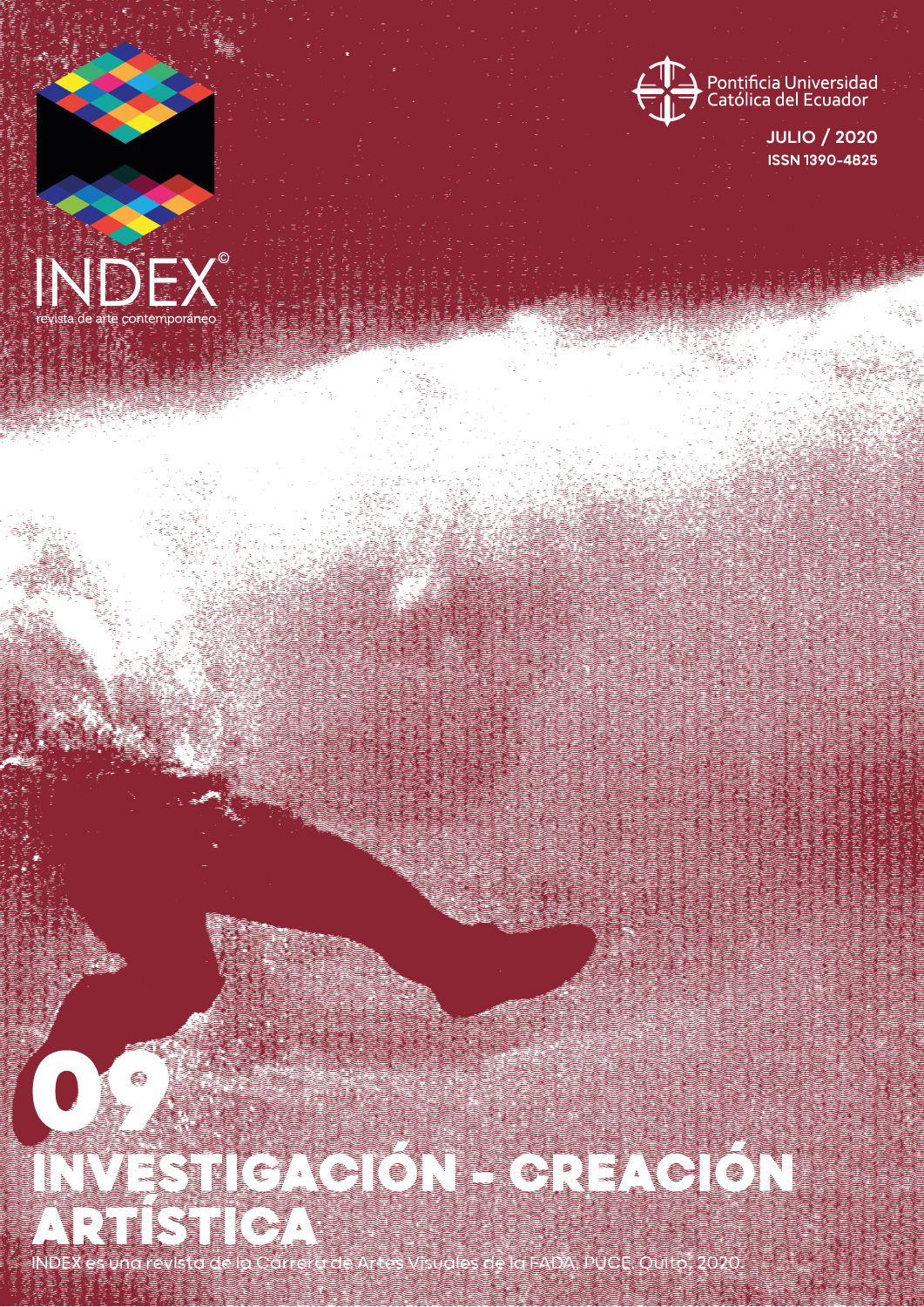Video art basic concepts: Joan Jonas’ case
Main Article Content
Abstract
This article refers to the basic concepts in the work of American artist Joan Jonas, key figure in the emergence and development of video art in the 20th century. This analysis will contemplate the conceptual evolution of two of the artist’s pieces, in which the transition and fusion of various elements that can be noticed, related to the body’s representation through image, audiovisual media experimentation and limits expansion in art. First, the cultural and artistic context will be defined, within the second half of the 20th century. Afterwards, we will refer to the contributions of Jonas in the emergence of video art, and to the conceptual appreciations displayed in her work. At this point, some concerns regarding performance art, conceptual art and video language will be considered.
Downloads
Article Details
Index, revista de arte contemporáneo maneja sus derechos bajo licencia Creative Commons Reconocimiento-NoComercial 4.0. En ese sentido los envíos quedan sujetos a la decisión del autor.
References
Castonway, S. (2006, November). 50 Years of the Video Cassette Recorder (WIPO Magazine Editorial Staff & Communications and Public Outreach Division, Eds.). WIPO Magazine. Retrieved August 12, 2017, from http://www.wipo.int/wipo_magazine/en/2006/06/article_0003.html
Elwes, C. (2005). Video Art a guided tour . New York, NY: I.B. Tauris
Friedel, H. (1986). Video Narcisuss- the new self- portrait. In: Video By Artists 2,
1st ed. Toronto: Elke Town, pp.113-125.
Fifer, S. J., & Hall, D. (1991). Illuminating video: an essential guide to video art. New York, NY: Aperture in association with Bay Area Video Coalition.
Friedman,K (2010). Fluxus performance. En Battcock, G. (Ed.), The act of Performance, A critical anthology (pp. 38-55) New York, NY: E.P. Dutton
Friedel, H. (1986). Video Narcisuss - The New Self-portrait. En E. Town (Ed.), Video by Artist 2(pp. 113-125). Toronto: Art Metropole.
Jonas, J. (1983). Joan Jonas: scripts and descriptions 1968-1982 / Joan Jonas.
Berkeley, CA: University Art Museum of California
Jonas, J. (2003) Joan Jonas: five works: [exhibition]. New York, NY: Queens Museum of art.
Jonas, J., Daneri, A., & Natalicchio, C. (2008). Joan Jonas (p. 130).
Milano:Charta.
Krauss, R. (1976). Video: The Aesthetics of Narcissism. October, 1, 50-64. doi:10.2307/778507
Krauss, R. (1999). Images coming thru. In: Abstraction Gesture Écriture. Zurich, Suiza: Peter Fischer, p.23
Kuzmina, E. (2012) El espejo: un misterio desde cuatro contigüidades.
Navarra, España: Universidad de Navarra.
Meigh-Andrews, C. (2006). A History of video art the development of form and function. Oxford, Reino Unido: Berg.
Perrée, R. (1988). Into video art: the characteristics of a medium = de karakteristieken van een medium. Rotterdam,Países Bajos:Con Rumore.
Rush, M. (2003). Video art. Londres, Reino Unido: Thames and Hudson.
Rush, M. (2002). Nuevas expresiones artísticas a finales del siglo XX. Barcelona, España: Destino Ediciones.
Sherman, T. (1986). XLII esposizione internazionale d'arte la biennale di
Venezia. Venezia: Electa.
Sturken,M.,& Cartwright,L (2003). Practices of looking : an introduction to visual
culture. New York: New York Oxford University Press.
The Solomon R. Guggenheim Foundation,(2017). Online Collection. Mayo 2 2017, de Guggenheim museum sitio web:
https://www.guggenheim.org/artwork/24749

